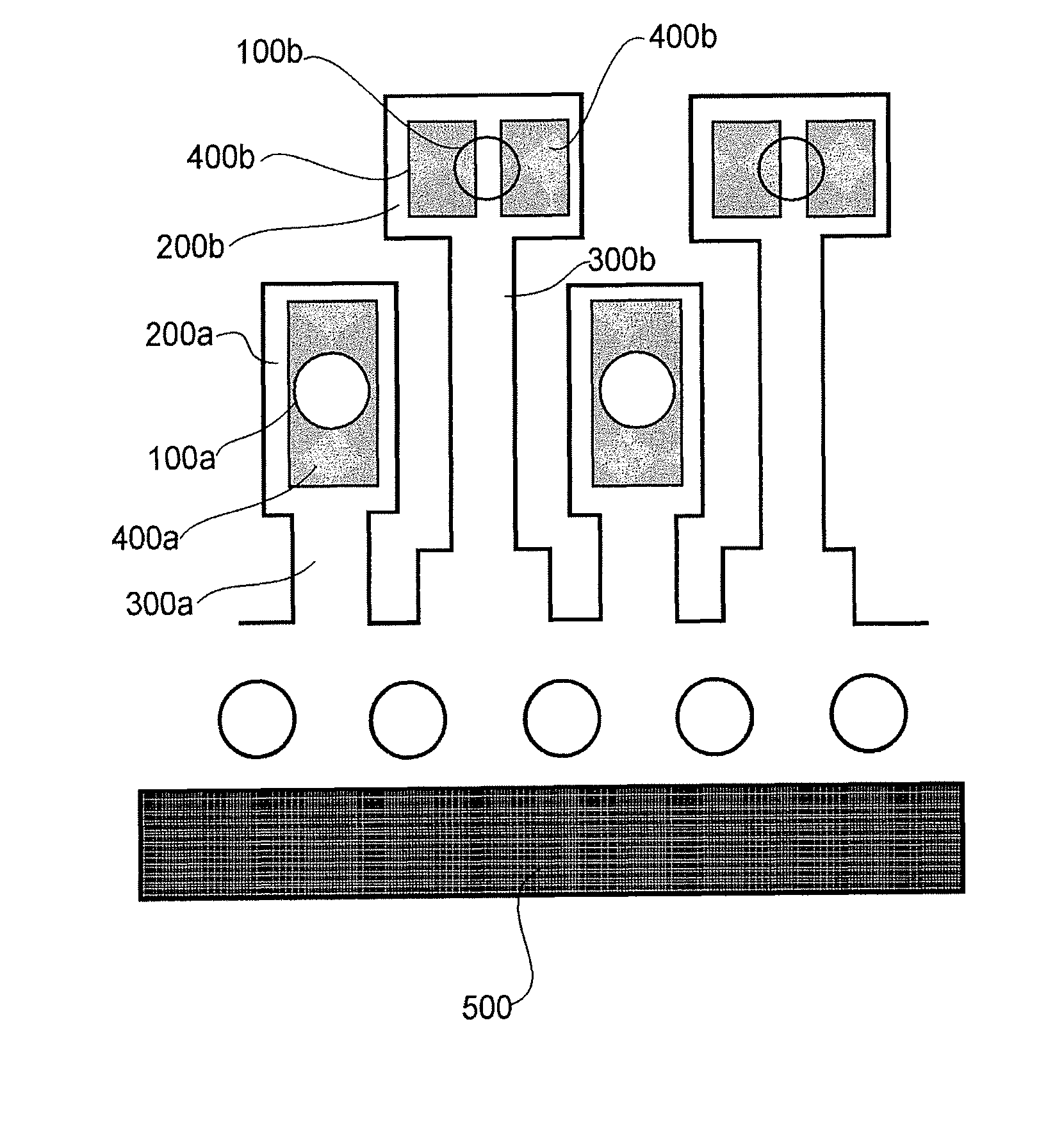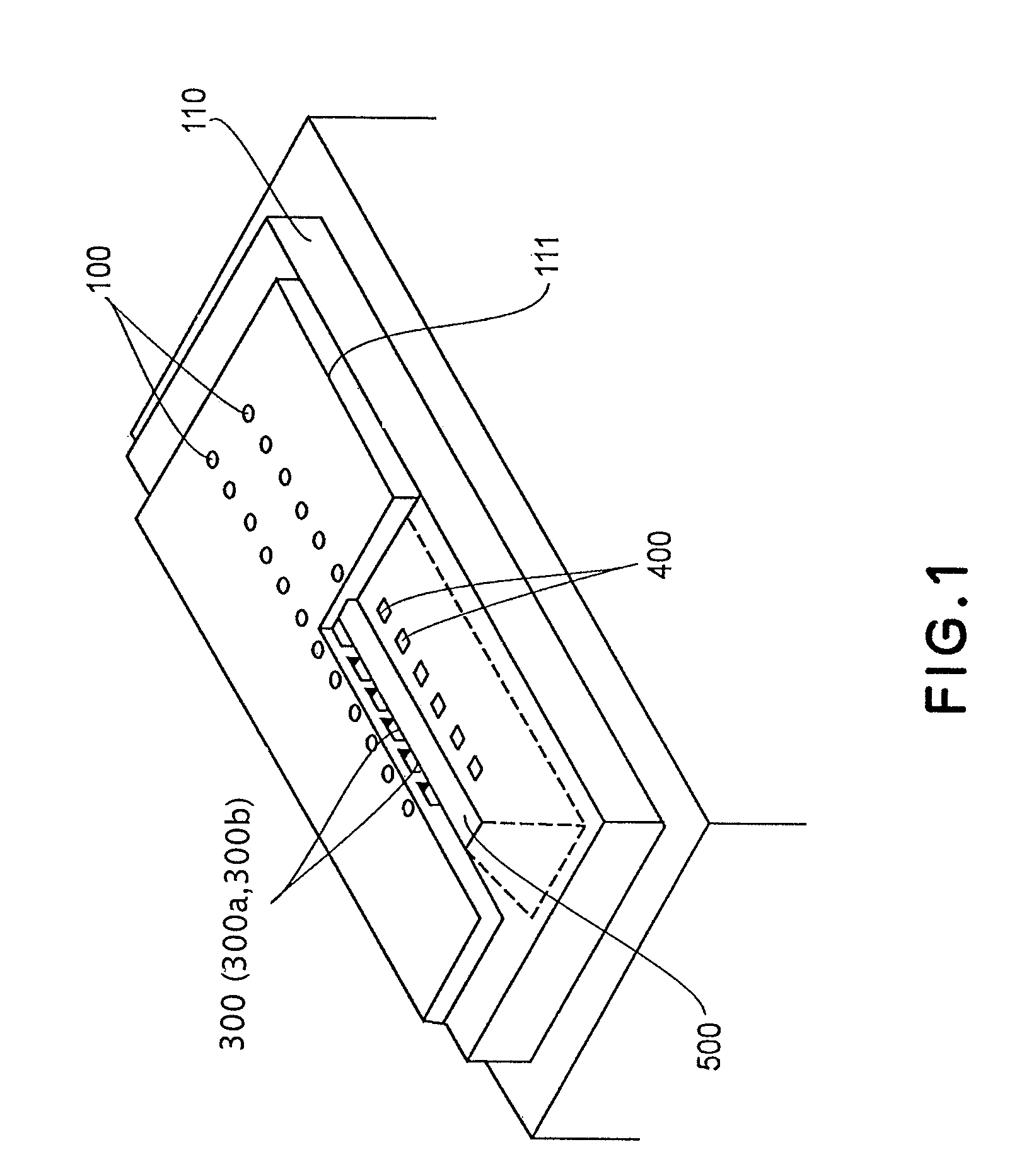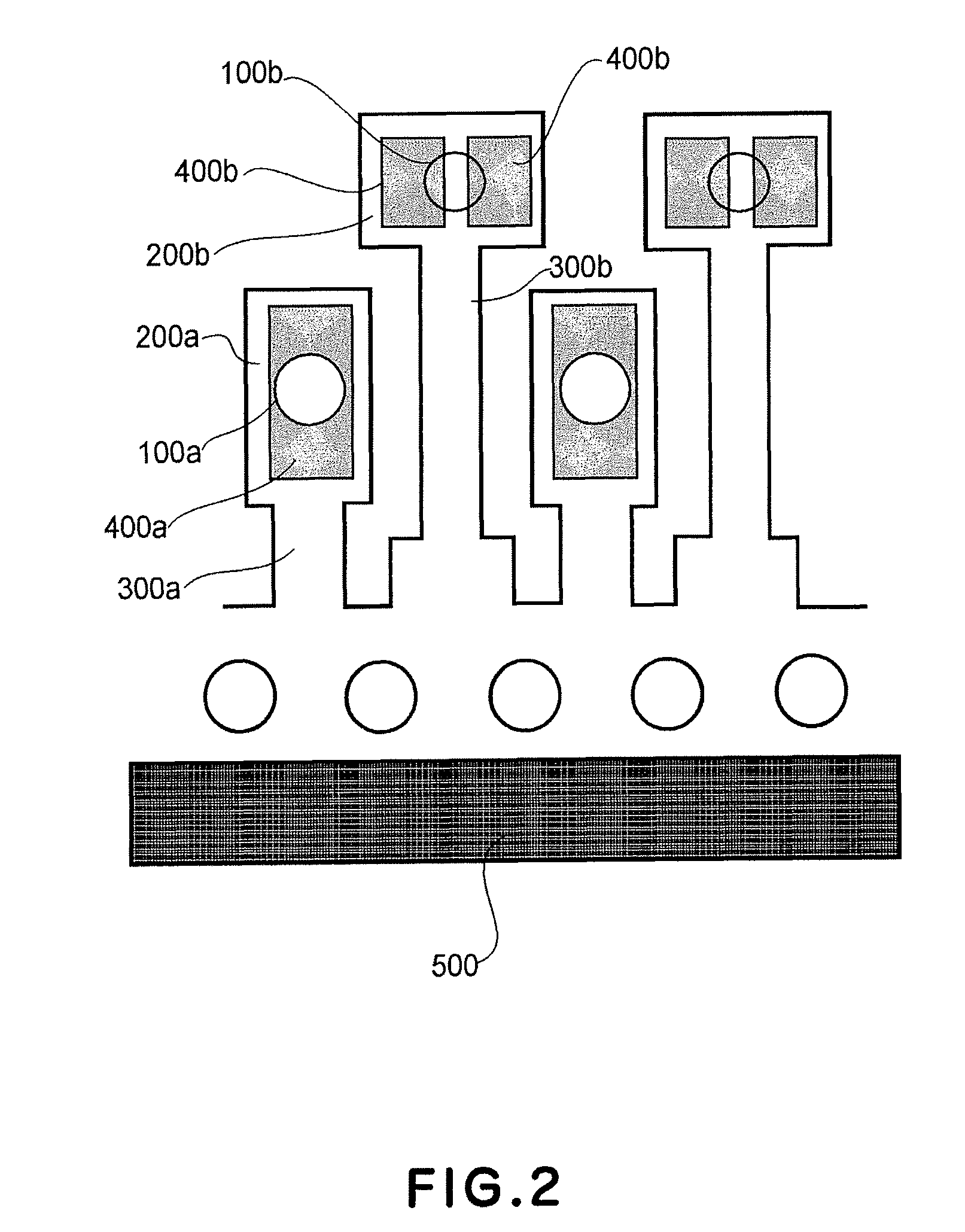Liquid jet head
a liquid jet and recording head technology, applied in printing and other directions, can solve the problems of adverse effects on the performance and image quality of the recording head in ink jetting, the inability to meet the needs of liquid jetting head, etc., to achieve stable liquid jetting performance and high image quality, without increasing the manufacturing cost of the chip driving power source, and without increasing the cost of the ink jet recording head chip cost
- Summary
- Abstract
- Description
- Claims
- Application Information
AI Technical Summary
Benefits of technology
Problems solved by technology
Method used
Image
Examples
embodiment 1
[0040]FIG. 2 shows the nozzle structure of the ink jet recording head in the first preferred embodiment of the present invention. In the following description of this embodiment, the structure of the ink jet recording head is described with reference to the portion of the ink jet recording head on one side of the common ink delivery channel 500. This, however, is not intended to limit the present invention in scope. That is, the other side of the common ink delivery channel 500 may also be provided with sets of nozzles similar to the groups of nozzles which will be described next. One end of a first liquid passage 300a and one end of a second liquid passage 300b are in connection with a pressure chamber 200a and a pressure chamber 200b, respectively, whereas the other end of the first liquid passage 300a and the other end of the second liquid passage 300b are in connection to the common ink delivery channel 500. Referring to FIG. 2, the ink jet recording head in this embodiment has ...
embodiment 2
[0058]FIG. 3 is a plan view of a portion of the ink jet recording head chip in the second embodiment of the present invention, showing its nozzle structure. This embodiment is similar to the first embodiment in that one end of each ink passage 300a is connected to the corresponding pressure chamber 200a, whereas the other end is connected to the common ink delivery channel 500, and also, in that one end of each ink passage 300b is connected to the corresponding pressure chamber 200b, whereas the other end is connected to the common ink delivery channel 500. Referring to FIG. 3, the ink jet recording head in this embodiment has multiple first ink jetting orifices 100a, which are relatively small in the distance from the common ink delivery channel 500, and multiple second ink jetting orifices 100b, which are relatively large in the distance from the common ink delivery channel 500. The first orifices 100a are aligned in a single straight row parallel to the lengthwise direction of th...
embodiment 3
[0069]FIG. 4 is a plan view of the ink jet recording head in the third embodiment of the present invention, showing its nozzle structure. One end of each ink passage 300a is connected to the corresponding pressure chamber 200a, whereas the other end is connected to the common ink delivery channel 500. Also, one end of each ink passage 300b is connected to the corresponding pressure chamber 200b, whereas the other end is connected to the common ink delivery channel 500. Referring to FIG. 4, the ink jet recording head chip in this embodiment has multiple first ink jetting orifices 100a, which are relatively small in the distance from the common ink delivery channel 500, and multiple second ink jetting orifices 100b, which are relatively large in the distance from the common ink delivery channel 500. The first orifices 100a are aligned in a single straight row parallel to the lengthwise direction of the common ink delivery channel 500, and the second orifices 100b are also aligned in a...
PUM
 Login to View More
Login to View More Abstract
Description
Claims
Application Information
 Login to View More
Login to View More - R&D
- Intellectual Property
- Life Sciences
- Materials
- Tech Scout
- Unparalleled Data Quality
- Higher Quality Content
- 60% Fewer Hallucinations
Browse by: Latest US Patents, China's latest patents, Technical Efficacy Thesaurus, Application Domain, Technology Topic, Popular Technical Reports.
© 2025 PatSnap. All rights reserved.Legal|Privacy policy|Modern Slavery Act Transparency Statement|Sitemap|About US| Contact US: help@patsnap.com



